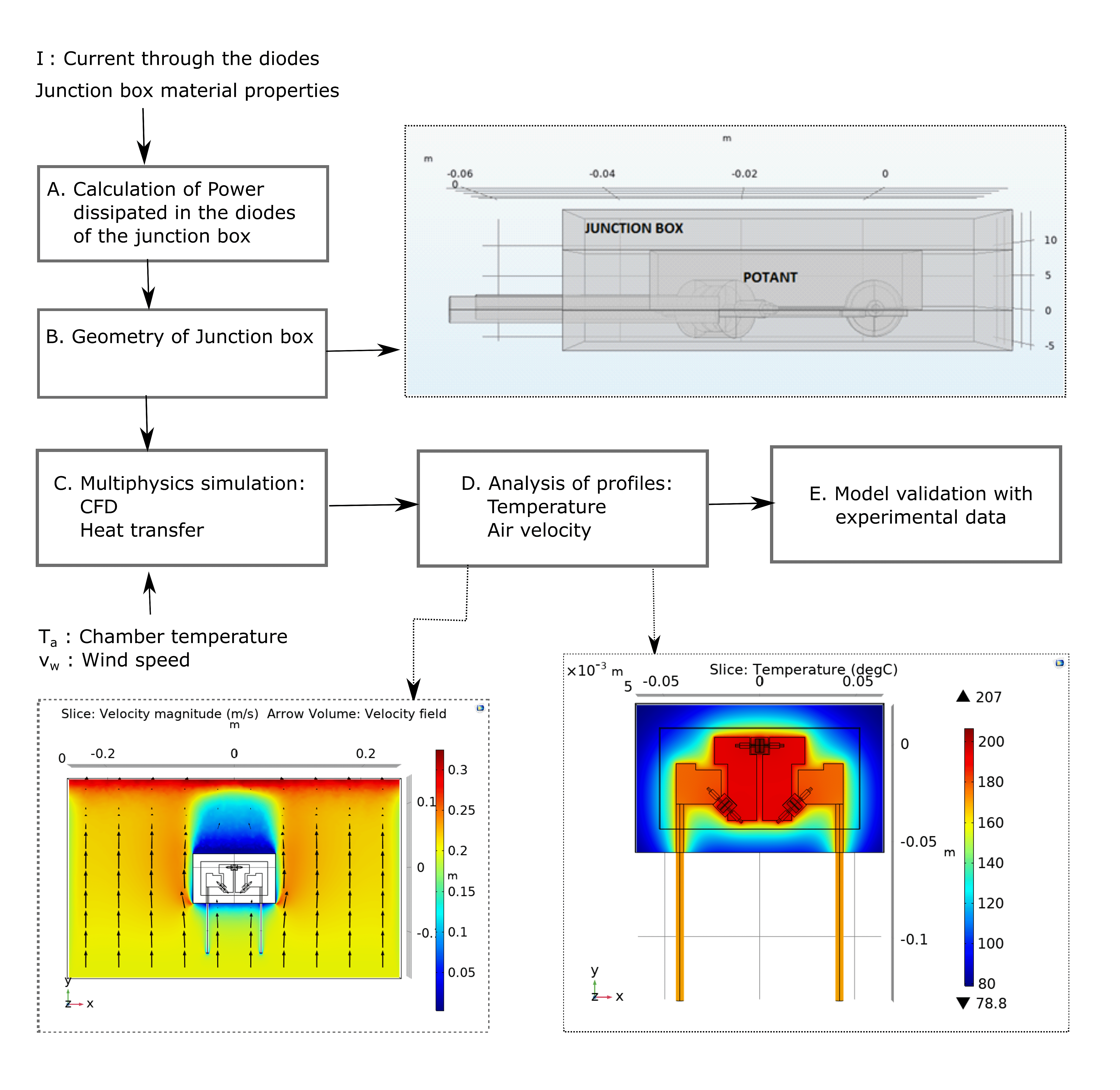


A Junction box is a part of a photovoltaic (PV) module that houses the conductors that carry currents from the substrings in the module, and the bypass diodes. Under un-shaded conditions, the bypass diodes in the junction box operate in reverse bias. In this case, the heat generated in the diodes is negligible. When the current in any of the substrings in the PV module is limited, then the bypass diode in parallel with that substring becomes forward biased. The power generated in the junction of the diode can reach 4.5 W. It is required that the junction box dissipates this heat to the surroundings to keep the junction temperature below the maximum rating.

The standards that junction boxes must qualify, govern its geometry and materials. A Finite Element Analysis (FEA) model that calculates temperature distribution for a given 3-D design of the junction box, its material properties and the information about the physical conditions around the junction box (air speed and ambient temperature) can save a significant amount of time and cost for manufacturing, experimentation and testing. The simulations of such models help in computing the sensitivity of diode junction temperature with respect to power dissipations in the diodes and the material properties of the junction box, placed in an environment chamber. We have described the methodology for these simulations and are working on the validation of the model.

Department of Electrical Engineering
Indian Institute of Bombay, Powai, India
karanprane@gmail.com

Department of Mechanical and Aerospace Engineering
The Ohio State University Columbus (OH), USA
verma.55@osu.edu

Department of Mechanical and Aerospace Engineering
The Ohio State University Columbus (OH), USA
contractor.15@osu.edu

Department of Electrical Engineering
Indian Institute of Bombay, Powai, India
naren@ee.iitb.ac.in